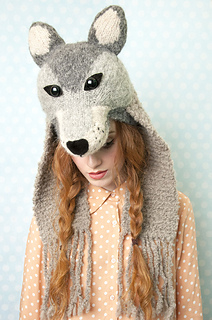[ In Esperanto ]
This post is admittedly horribly late. But it's been bouncing around in my skull for a while, so I thought I might get it out there.
In the interests of encouraging on of my co-workers, who is Muslim, I observed Ramadan with him. By "observed", I mean that I fasted during the day, and I knit some hats for refugees as a part of the charity aspect. No visits to the mosque or any other activities. But I came away with some impressions:
- Not having food sucks.
- When you don't have food, all you think about is food. It is tremendously difficult to be productive.
- I still cannot imagine what it would be like to not only go without food, but to do it without the certain knowledge that as soon as the sun goes down, you can eat. So, given that it's difficult to be productive when you do know you're going to eat, I can only surmise that it would be even more difficult to be productive if you didn't know when you'd be getting your next meal.
- Multiply this by 1000 when you're worrying about a family.
Lack of regular access to food is, therefore, a barrier to success -- both physically and mentally. It's a form of oppression. And if you have to spend all your time acquiring food and the materials to cook food, how could you have the time to teach your children anything else, or do something to dig yourself out of that metaphorical hole?
Observing the fast opened a tiny, tiny window into the world of hunger. For me, it's a tiny window because there are no barriers whatsoever to me or my beloved family eating whenever we want to. There is a much broader and more awful landscape to this issue. I don't think the solution is necessarily "throw money/food at people". I think it's important that everyone be self-sufficient. But there are small steps that can be taken:
- The search for and use of resources in order to prepare food in a healthy manner is a trial all of its own. I am very interested in the Integrated Cooking Method as a means to reduce the waste of time and material in order to heat up food and/or water to safe temperatures. In particular, devices like the Water Pasteurization Indicator (WaPI) are important for ensuring that water is Pasteurized (rendered free from biological contamination). This is critical not only in areas with inadequate water sanitation facilities, but for preparing for widespread disasters that affect the clean water supply.
- I love charities like Heifer International, because they offer not only stuff (in the form of live-/agricultural/aquacultural-stock), and not only the education needed for sustainable farming, but also require the pledge to pass on that knowledge and the first offspring to someone else in the community.
Food's important. You can't function without proper nutrition and hydration. You can't succeed without being able to function. You can't pull yourself out of a bad situation if you can't succeed. It's always more complex than this -- there are many, many, many barriers to success -- but food and water is pretty basic. Not eating or drinking during the daylight hours for a whole month was a simple, but powerful, reminder.











